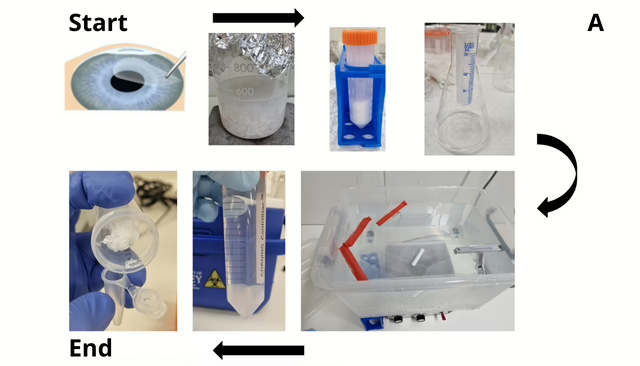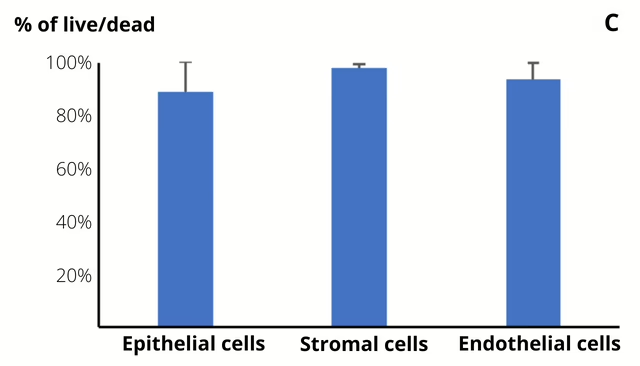Using surgically discarded tissue for the fabrication of optically transparent endothelium for more surgical potentials
‘Future Vision Foundation funding allowed us to take our previous preliminary findings in a novel direction, resulting in a real and tangible outcome and an exciting platform for our continued research. It was undoubtedly a key ingredient in our team being awarded a subsequent large-scale government grant (the largest grant for an eye treatment in Australian history). We can now continue to develop these findings and translate them into a practical treatment that may help the lives of millions of patients across the world.’ – Prof Gerard Sutton, Co-Investigator
Project status
Complete
Key outcomes
- For the first time, researchers were able to identify, retrieve and then recycle human tissue that could be utilised to support the development of an alternative corneal layer, which may represent a platform for both eye and general rehabilitative procedures. Further research is required to optimise the characteristics of the developed material; however, the researchers have already demonstrated significant potential above existing options.
-
The researchers have produced a globally novel finding that has the potential to form the basis of a key alternative treatment for patients with significant visual loss due to corneal disease or injury.
-
The application of these findings extends well beyond visual rehabilitation and may ultimately lead to improved treatment of a range of non-ocular conditions.
Project overview
Corneal disease and injury represent one of the leading causes of blindness globally.
Although corneal transplant procedures remain successful in returning vision for patients, it is estimated that only 1 in 70 patients are able to access the required replacement donor tissue at surgery. The issue is more significant in developing countries. A potential solution is to develop biologically equivalent tissue, which can be used in place of the donor tissue.
There are multiple challenges in developing a biological alternative. The cornea is a complex combination of multiple layers which serve different functions to maintain structure and transparency. Although researchers have had limited success in developing the different layers, access to basic building blocks (cells) and replicating the characteristics of natural tissue remains a significant issue. In this project, researchers aimed to use tissue previously discarded at eye surgery to harvest cells and grow these to form the inner layer of the cornea (endothelium).
Using tissue which otherwise would be discarded after routine eye surgery, the researchers were able to extract pure collagen. The collagen could then be used as the main ingredient of bioengineered corneal layers and as a further carrier for the individual cells created.
Future Vision Foundation, alongside Vision Eye Institute, was crucial in providing financial and logistical support to aid the collection of tissue and the subsequent laboratory investigation.
Research findings
- Human lens capsule discarded during transplantation and surgery procedures can be used to extract pure Collagen Type IV, which can be used as bioink or as carrier of cell carrier layer.
- Human lens capsule can be isolated and used as a bioengineered membrane layer – it provides optimal cell attachment to primary Human Corneal Endothelial cell and Corneal Endothelial cell lines.
- Compared to pure Col-IV membrane, bioengineered lens capsule can be further strengthened via photo-crosslinking to be a stronger biomaterial and carrier of cells.
- Using human lens capsule as ECM cell carrier allows faster wound healing of corneal endothelial cells compared to Col-I or culture plastic, thus demonstrating its potential for engineering the endothelial layer for endothelial keratoplasty and the treatment of endothelial diseases.
Figure A shows the collagen extraction process. The extracted collagen shows great biocompatibility for corneal cells (Figures B and C).
The information on this page is general in nature. All medical and surgical procedures have potential benefits and risks. Consult your doctor for specific medical advice.




